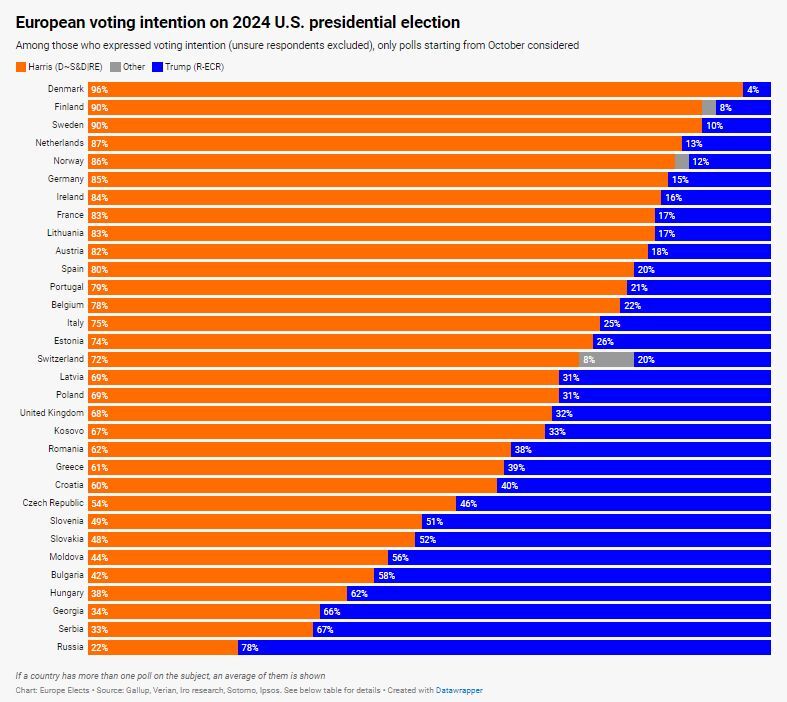this post was submitted on 05 Nov 2024
40 points (100.0% liked)
chapotraphouse
13535 readers
57 users here now
Banned? DM Wmill to appeal.
No anti-nautilism posts. See: Eco-fascism Primer
Gossip posts go in c/gossip. Don't post low-hanging fruit here after it gets removed from c/gossip
founded 3 years ago
MODERATORS
you are viewing a single comment's thread
view the rest of the comments
view the rest of the comments

I really wonder how this compares to the voting patterns of actual voting-age US citizens permanently residing in these countries — obviously excluding the vast majority of US overseas citizens who don't vote. I absolutely think there would be clear differences in the ratios, but the extent of this difference is hard to say. US overseas citizens might be more likely to vote third-party than the general population just because fewer people in the general population would even be aware of the existence of third parties compared to overseas citizens; US overseas citizens might contradict the general population in terms of favoring Harris vs Trump, if more of them emigrated from red states compared to blue states or vice versa. For instance.
I'm mostly wondering about this because I want to know what percentage of people in this country who actually could and actually did vote actually spent the opportunity to show a fuuucking spiiine.
i would actually guess it'd be somewhat backwards? wouldn't a higher proportion of vote-eligible US-citizens in countries less friendly to the US be attached to the diplomatic corps, NGOs, etc. while in western europe there would be more non-state affiliated yankees? assuming of course that bureaucrats and their families prefer dem technocrats, i think they tend to but i haven't checked
e: this makes it sound like average americans prefer trump, which isn't actually true. more like kamala would have the highest support in state-department demographics and dominate the wider samples by a weaker margin.